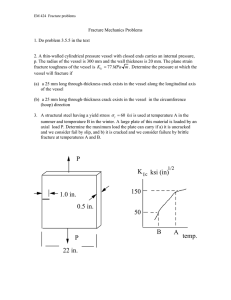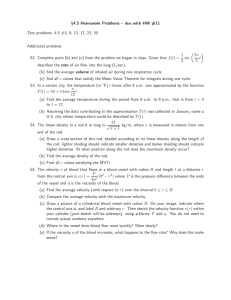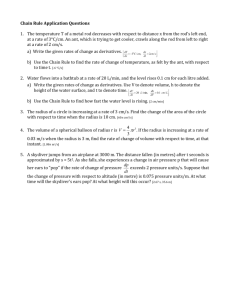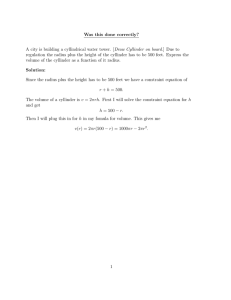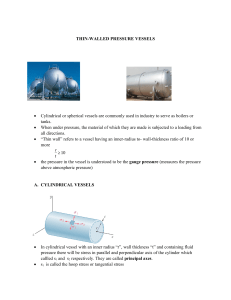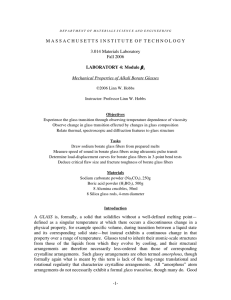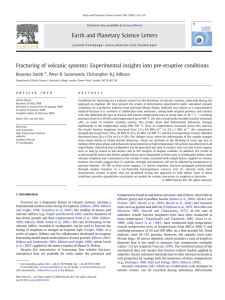EM 388F: Fracture Mechanics HW#4 (due Monday, March 24, 2008)
advertisement
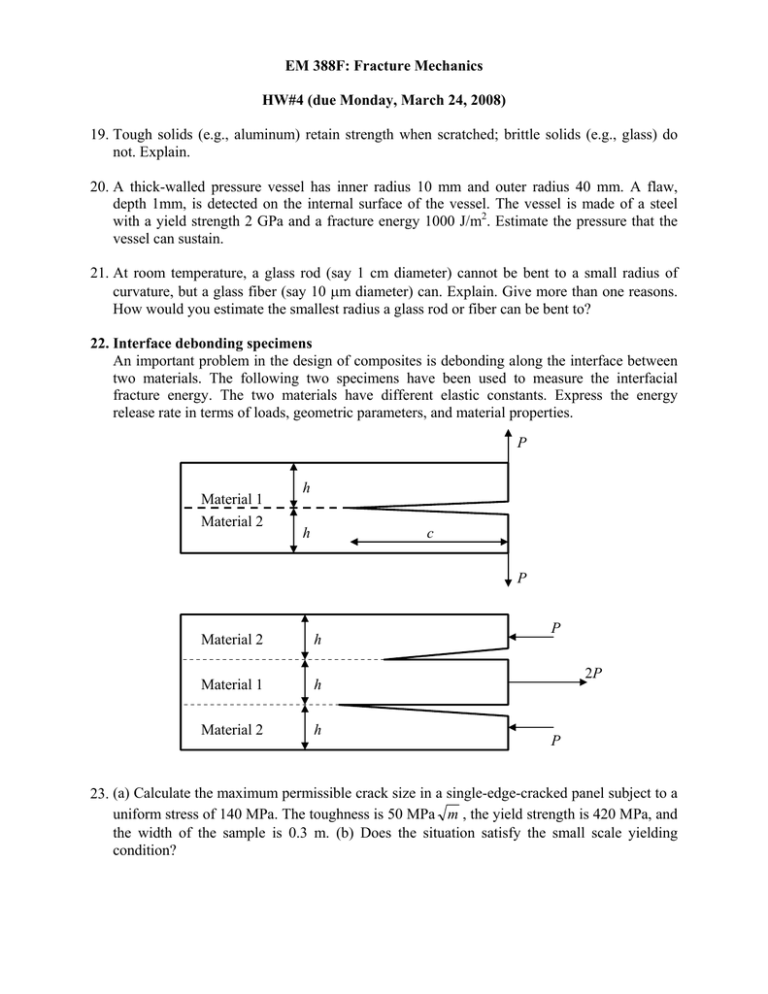
EM 388F: Fracture Mechanics HW#4 (due Monday, March 24, 2008) 19. Tough solids (e.g., aluminum) retain strength when scratched; brittle solids (e.g., glass) do not. Explain. 20. A thick-walled pressure vessel has inner radius 10 mm and outer radius 40 mm. A flaw, depth 1mm, is detected on the internal surface of the vessel. The vessel is made of a steel with a yield strength 2 GPa and a fracture energy 1000 J/m2. Estimate the pressure that the vessel can sustain. 21. At room temperature, a glass rod (say 1 cm diameter) cannot be bent to a small radius of curvature, but a glass fiber (say 10 μm diameter) can. Explain. Give more than one reasons. How would you estimate the smallest radius a glass rod or fiber can be bent to? 22. Interface debonding specimens An important problem in the design of composites is debonding along the interface between two materials. The following two specimens have been used to measure the interfacial fracture energy. The two materials have different elastic constants. Express the energy release rate in terms of loads, geometric parameters, and material properties. P Material 1 Material 2 h h c P Material 2 h Material 1 h Material 2 h P 2P P 23. (a) Calculate the maximum permissible crack size in a single-edge-cracked panel subject to a uniform stress of 140 MPa. The toughness is 50 MPa m , the yield strength is 420 MPa, and the width of the sample is 0.3 m. (b) Does the situation satisfy the small scale yielding condition?

